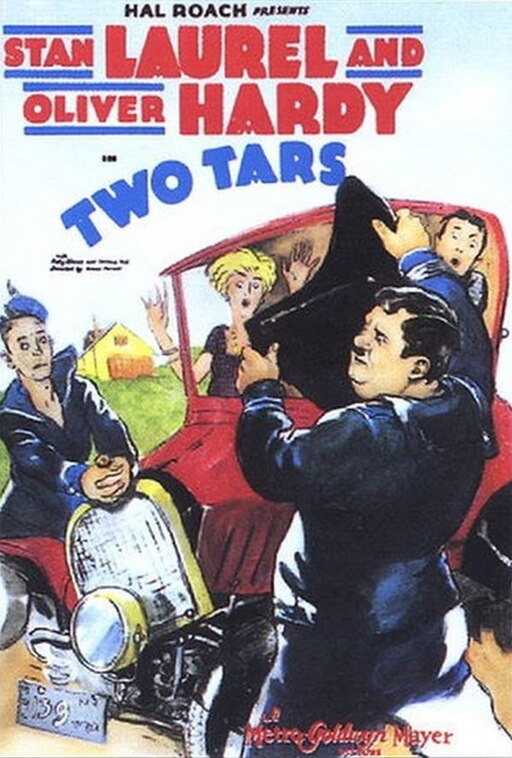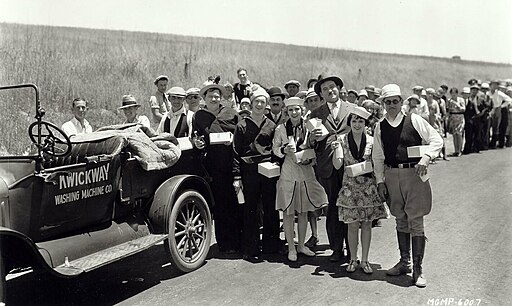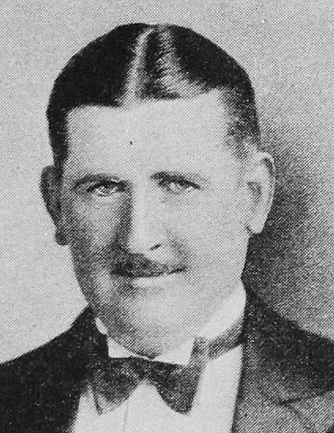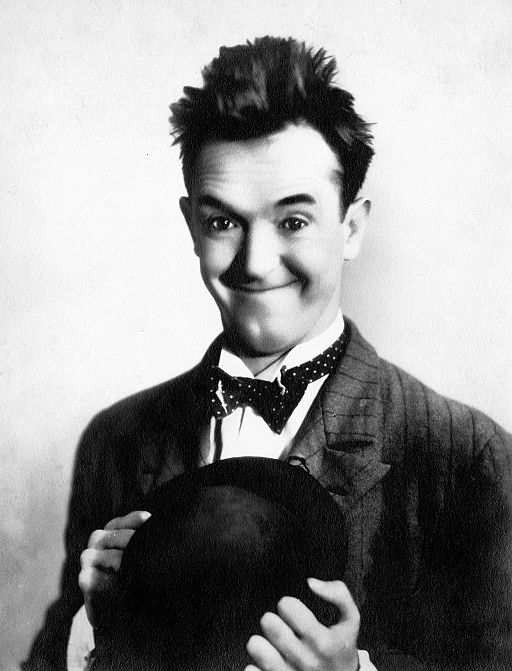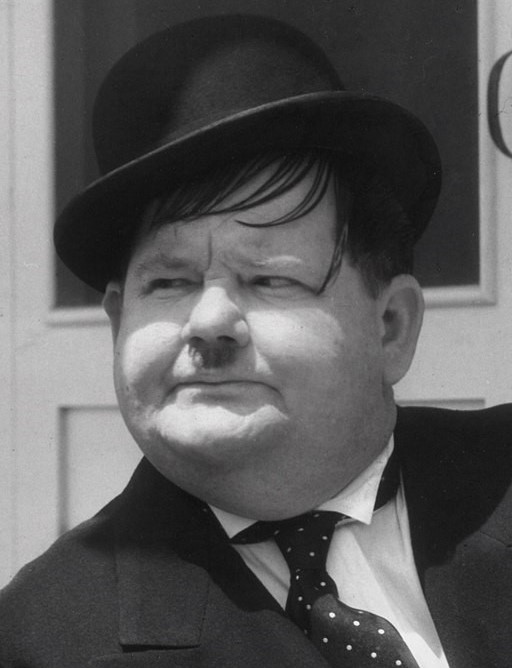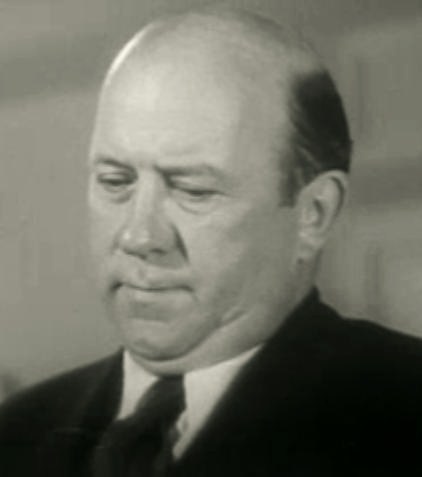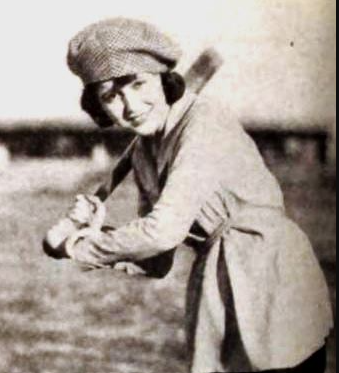Two Tars - 1928
back| Released by | Metro-Goldwyn-Mayer |
| Director | James Parrott |
| Producer | Hal Roach |
| Script | H.M. Walker (titles) |
| Cinematography | George Stevens |
| Music by | Silent movie |
| Running time | 21 minutes |
| Film budget | Unknown |
| Box office sales | Unknown |
| Main cast | Stan Laurel - Oliver Hardy - Edgar Kennedy - Thelma Hill |
Two Tars
Introduction of the Traffic Jam
"Two Tars" features Laurel and Hardy as sailors who have a day of leave to enjoy themselves in the city. The film is renowned for its climactic traffic jam sequence, which turns into a chaotic free-for-all, showcasing the duo's iconic slapstick comedy style.
Related
Two Tars – 1928
"Two Tars" is a classic silent short comedy that showcases the comedic genius of Stan Laurel and Oliver Hardy, known collectively as Laurel and Hardy. The film, directed by James Parrott and released in 1928, is a humorous portrayal of the duo's antics during a shore leave. This summary and analysis aim to provide a detailed look into the plot and the comedic elements that make "Two Tars" a memorable piece of silent cinema.
Summary
The film begins with Laurel and Hardy portraying two sailors, who are on a brief shore leave. They decide to rent a car to enjoy their day off to the fullest. Early on, their mischievous nature is evident as they engage in playful antics, demonstrating their knack for finding trouble even in mundane situations.
Their adventure takes a significant turn when they pick up two young ladies. The sailors aim to impress their new acquaintances with a drive around the town. However, their outing quickly devolves into a series of comedic mishaps. The quartet's attempts to enjoy their day are continually thwarted by minor obstacles and misunderstandings, escalating the film's comedic tension.
The film's climax occurs in a traffic jam, which has become one of the most celebrated sequences in silent film comedy. The jam, caused by a series of trivial events compounded by the characters' overreactions, turns into a chaotic brawl involving all the motorists. The sailors and their companions become central figures in this chaos, engaging in slapstick battles that involve tearing apart each other's cars and engaging in physical comedy. This sequence showcases Laurel and Hardy's physical comedy skills and their ability to turn simple scenarios into uproarious humor.
Analysis
"Two Tars" is an excellent example of Laurel and Hardy's comedy, which often revolves around escalating situations of conflict and misunderstanding. The film effectively uses the silent cinema format, relying on physical comedy, facial expressions, and situational humor to convey the story and the jokes. The absence of dialogue is hardly felt, as the duo's antics and the expressive cinematography communicate everything necessary for the audience to follow along and be entertained.
The traffic jam sequence is particularly noteworthy for its choreographed chaos. It demonstrates not only the comedic talents of Laurel and Hardy but also the film's technical proficiency in staging complex scenes without dialogue. This sequence can be seen as a metaphor for the frustrations of modern life, with the escalating destruction serving as a comedic exaggeration of the minor annoyances people experience daily.
"Two Tars" also reflects the social and cultural milieu of the late 1920s, a time when automobiles were becoming increasingly common, and the public was fascinated with mobility and freedom. However, the film cleverly critiques this fascination by showing how the promise of freedom on the open road can quickly devolve into a stifling gridlock, leading to absurdity and chaos.
In conclusion, "Two Tars" stands out as a testament to Laurel and Hardy's enduring appeal as masters of slapstick comedy. The film's ability to convey humor and critique through physicality and visual storytelling exemplifies the unique strengths of silent cinema. "Two Tars" remains a beloved classic, not just for its historical significance but for its timeless humor that continues to resonate with audiences today.
Two Tars Scene with Traffic Jam:
Full Cast of the Movie:
- Stan Laurel as Sailor
- Oliver Hardy as Sailor
- Thelma Hill as Girl in Distress
- Ruby Blaine as Girl in Distress
- Edgar Kennedy as Traffic Cop
- Charlie Hall as Motorist
- Sam Lufkin as Motorist
- Harry Bernard as Motorist
- Chet Brandenburg as Motorist
- Baldwin Cooke as Motorist
- Jack Hill as Motorist
- Bob Kortman as Motorist
Analysis of the Direction of James Parrott:
James Parrott's direction in "Two Tars" exemplifies his ability to orchestrate complex comedic sequences and highlight the physical comedy that was a hallmark of the Laurel and Hardy films. In this 1928 silent short comedy, Parrott showcases his directorial prowess through a blend of situational humor, slapstick, and meticulously timed gags, making the most of the film's simple premise—two sailors on shore leave getting into an escalating series of misadventures during a day out.
Parrott's direction is particularly notable for how he manages the film's climactic scene, a massive traffic jam that descends into chaos. This sequence is a masterclass in building comedic tension and delivering payoff through escalating absurdity. Parrott successfully navigates the fine line between chaos and coherence, allowing the audience to follow the progression of the brawl while ensuring that each gag lands effectively. His ability to coordinate a large ensemble cast in this sequence, ensuring that each character's reactions and contributions to the chaos are both visible and humorous, speaks to his skill in staging and visual comedy.
Moreover, Parrott's use of cinematic techniques, such as strategic framing, close-ups, and timing, enhances the comedic effect. By focusing on the expressions and physical comedy of Laurel and Hardy, he amplifies the humor derived from their interactions with each other and their environment. Parrott's understanding of the duo's dynamic and comedic timing is evident throughout the film, as he places them in situations that maximize their potential for humor and allows their characters to drive the comedy forward.
In addition to the physical comedy, Parrott's attention to the comedic potential of everyday situations and objects—such as the simple act of driving and the inevitable frustrations of traffic—demonstrates his ability to find humor in relatable scenarios, elevating them through the lens of Laurel and Hardy's unique comedic perspective.
Master Performance of Stan Laurel:
Stan Laurel's performance in "Two Tars" is a quintessential display of his comedic genius and mastery of physical comedy, which, when paired with Oliver Hardy, creates a dynamic that has become iconic in the world of comedy. In this film, Laurel embodies the character of a mischievous and somewhat naïve sailor on shore leave, showcasing his talent for both subtle humor and exaggerated slapstick.
Laurel's comedic approach in "Two Tars" is multifaceted; he utilizes a wide range of facial expressions, body language, and timing to convey humor, often without a single line of dialogue. His ability to express confusion, surprise, and frustration with just a raise of an eyebrow or a puzzled look is remarkable and contributes significantly to the film's comedic effect. His physical comedy, including pratfalls, exaggerated reactions to situations, and the intricate dance of slapstick violence, demonstrates a precise control over his movements that few comedians can match.
One of the most compelling aspects of Laurel's performance is his chemistry with Oliver Hardy. Laurel plays the more childlike and innocent of the duo, often instigating the comedic situations that the two find themselves in. His interactions with Hardy are based on a deep understanding of comedic timing and rhythm, with Laurel often playing the foil to Hardy's more pompous and self-assured character. This dynamic is at the heart of the film's humor, with Laurel's antics setting the stage for much of the conflict and comedy that ensues.
Laurel's performance is also notable for its empathy and relatability. Despite the outlandish situations and over-the-top reactions, there's a genuine sense of character that Laurel brings to his role. Audiences can't help but sympathize with his predicaments, rooting for him even as they laugh at the chaos he helps to create. This connection with the audience is a testament to Laurel's skills as an actor and comedian, making his performance in "Two Tars" a standout example of his work.
In summary, Stan Laurel's performance in "Two Tars" exemplifies his comedic brilliance, showcasing his ability to blend physical comedy, expressive acting, and impeccable timing. His portrayal of a simple sailor caught up in a series of increasingly absurd situations highlights his unique talent for making audiences laugh while simultaneously endearing his character to them. His work in this film remains a masterclass in silent film comedy, contributing significantly to the lasting legacy of Laurel and Hardy as one of the greatest comedy duos in cinema history.
Exceptional Performance of Oliver Hardy:
Oliver Hardy's performance in "Two Tars" showcases his exceptional talent for embodying the straight man in the classic comedy duo dynamic with Stan Laurel. Hardy's role as the slightly more dignified and often exasperated counterpart to Laurel's childlike innocence and mischief is fundamental to the duo's comedy, and in this film, his contributions are both subtle and impactful.
Hardy's comedic genius lies in his mastery of facial expressions and the art of the slow burn. His ability to convey a range of emotions—from bewilderment to frustration, often culminating in resigned acceptance of the duo's chaotic situations—adds a rich layer of humor to the film. His reactions to Laurel's antics and the absurdities they encounter are meticulously timed, with Hardy often serving as the anchor that grounds the comedy in a relatable reality. His signature look of disbelief straight into the camera creates a direct connection with the audience, inviting them to share in his incredulity and amusement.
Physically, Hardy complements Laurel's slapstick with a more restrained style of physical comedy that nonetheless requires precise timing and control. His use of body language, whether in exaggerated gestures of indignation or the physical comedy inherent in the duo's frequent tumbles and mishaps, is executed with a grace that belies his larger frame. This physicality, when contrasted with Laurel's, enhances the visual comedy of their performances, making even simple actions like attempting to navigate a car through traffic a source of laughter.
Hardy's performance is also characterized by his vocal expressions, despite the film being silent. His ability to mouthe words in a way that the audience can almost hear what he's saying adds another dimension to his character. This skill helps to bridge the gap between silent cinema and the sound era, showcasing Hardy's versatility as a performer.
The chemistry between Hardy and Laurel is central to the film's success, and Hardy's ability to play the slightly more sensible yet equally fallible character is key to their dynamic. He adeptly portrays the frustration of dealing with Laurel's blunders while simultaneously conveying a deep-seated affection for his friend, highlighting the duo's underlying camaraderie amidst the chaos.
In "Two Tars," Oliver Hardy delivers a performance that exemplifies his role as the perfect foil to Stan Laurel's more whimsical character. His comedic timing, expressive acting, and physicality contribute significantly to the duo's ability to turn simple scenarios into memorable comedy. Hardy's portrayal in the film is a testament to his talent and an essential component of the enduring appeal of Laurel and Hardy's comedic legacy.
Classic Scenes from the Movie:
"Two Tars" is renowned for its brilliantly orchestrated scenes of chaos and comedy, featuring Stan Laurel and Oliver Hardy in their prime. Here are some classic scenes from the film that have left a lasting impact on audiences and comedians alike:
The Gum Vending Machine Scene
Early in the film, Laurel and Hardy encounter a gum vending machine. What starts as a simple attempt to purchase gum quickly escalates into a comical display of frustration. As the machine fails to dispense the gum, their efforts to outsmart it lead to a series of slapstick mishaps, showcasing their comedic timing and physical comedy skills.
The Traffic Jam
Arguably the most famous sequence in "Two Tars" is the massive traffic jam caused by Laurel and Hardy. This scene is a masterclass in escalating comedy, as what begins as a minor traffic inconvenience quickly spirals out of control. Their attempts to navigate through the jam lead to absurd situations, including the duo inadvertently causing more chaos among the already frustrated drivers. The scene's brilliance lies in its choreography of chaos, where each action sets off a chain reaction, culminating in an all-out brawl among the motorists.
The Car Disassembly Fight
The climax of the traffic jam scene involves a spectacularly chaotic fight where the motorists, driven to the brink, begin to disassemble each other's cars piece by piece. The scene is a riotous blend of destruction and slapstick, as Laurel and Hardy, along with the other characters, tear apart the cars with an almost balletic precision. The visual gags, such as doors being ripped off and engines being dismantled while the owners express their outrage, are executed with impeccable timing.
Interactions with Policemen
Throughout "Two Tars," Laurel and Hardy have several run-ins with the law, particularly with traffic policemen. These encounters are characterized by a mixture of innocence and mischief, as the duo tries to talk their way out of trouble. Their interactions with authority figures add a layer of social satire to the film, poking fun at the absurdity of bureaucratic power in everyday life.
The Flirting Scene
Another memorable moment occurs when Laurel and Hardy, in an attempt to impress two young ladies, engage in a series of flirtatious antics. This scene is notable for its playful humor and the way it showcases the duo's charm and likability, even when their efforts at romance go hilariously awry.

